Address
304 North Cardinal
St. Dorchester Center, MA 02124
Work Hours
Monday to Friday: 7AM - 7PM
Weekend: 10AM - 5PM
Address
304 North Cardinal
St. Dorchester Center, MA 02124
Work Hours
Monday to Friday: 7AM - 7PM
Weekend: 10AM - 5PM

In navigating the ever-evolving landscape of the kitchen appliance market, brands must adapt to the changing tides of consumer demand and technological innovation. The path to success is paved with strategic planning and a keen understanding of the competitive forces at play. This article explores the strategies that can help brands not only survive but thrive in a market where the only constant is change.
The European and American kitchen appliance markets have experienced a significant transformation with the rise of ETL listed commercial units. This surge can be attributed to several factors that have reshaped the industry landscape.
The demand for commercial kitchen appliances has grown exponentially as restaurants, hotels, and catering services seek to enhance their operational efficiency and quality. ETL listed appliances, which meet rigorous safety and performance standards, have become a preferred choice for businesses looking to invest in reliable equipment.
In Europe, the shift towards healthier eating habits and the rise of gourmet dining have sparked an interest in high-end commercial appliances. Chefs and restaurateurs are not just focusing on functionality but also on the aesthetic appeal and energy efficiency of their equipment. ETL certification has become a hallmark of quality that consumers and businesses alike seek out.
On the other side of the Atlantic, the American market is witnessing a similar trend, driven by the increasing popularity of foodservice establishments that emphasize customization and innovation. From fast-casual chains to upscale diners, the need for top-tier commercial units is palpable, and ETL listing has emerged as a symbol of trust and compliance with safety regulations.
The integration of smart technology into commercial kitchen appliances has also played a crucial role in their rising popularity. Features like remote monitoring, energy-saving modes, and programmable settings are not only convenient but also cost-effective for businesses aiming to reduce their environmental footprint.
As sustainability becomes a key concern for both consumers and businesses, the demand for ETL listed appliances that are energy-efficient and environmentally friendly has surged. These units are often designed with the latest eco-friendly materials and technologies, making them a more attractive option for eco-conscious operators.
The culinary scene in both regions has become more diverse, with a growing number of niche markets. From artisanal bread bakeries to specialized coffee shops, the variety of foodservice operations has created a demand for a wide range of ETL listed commercial units that cater to specific culinary needs.
Regulatory changes and updates have also contributed to the prominence of ETL listed appliances. In response to safety concerns, European and American governments have implemented stricter regulations, making it essential for commercial kitchen equipment to meet certain standards to be legally sold in the market.
Moreover, the global sourcing of ingredients and the rise of international culinary influences have necessitated the use of appliances that can handle diverse cooking techniques and temperatures. ETL listed units often come with a range of versatile features that can adapt to various recipes and cooking styles.
The rise of online sales and e-commerce platforms has further facilitated the availability and popularity of ETL listed commercial units. Businesses now have easier access to a wider selection of products, and the convenience of online shopping has made it more feasible for them to source high-quality equipment.
In conclusion, the ascent of ETL listed commercial units in Europe and America is a testament to the evolving demands of the foodservice industry. With a focus on safety, efficiency, sustainability, and technological innovation, these units have become an integral part of the modern kitchen landscape. As the industry continues to evolve, it’s likely that ETL listed appliances will remain a cornerstone of excellence and reliability for years to come.

In the ever-evolving landscape of the kitchen appliance industry, understanding market dynamics is crucial for both established players and newcomers alike. The market is shaped by a myriad of factors, from technological advancements to consumer behavior, and each element plays a pivotal role in the success of products and companies.
Consumer demands are as diverse as they are dynamic. Today’s consumers are not just looking for appliances that perform well; they are seeking smart, energy-efficient, and eco-friendly solutions. This shift in preference has led to a surge in demand for ETL (Electrical Testing Laboratories) listed commercial units, which are known for their stringent safety standards and reliability.
The integration of smart technology has been a game-changer. Smart kitchen appliances, such as refrigerators with Wi-Fi connectivity and ovens that can be controlled via smartphone apps, are becoming increasingly popular. This trend is driven by the convenience and connectivity they offer, allowing users to manage their appliances remotely and optimize their kitchen experiences.
The competitive landscape is fierce, with numerous brands vying for market share. Brands that have managed to carve out a niche often do so by focusing on specific segments or by offering unique features that set them apart. For instance, some companies are specializing in commercial units designed for specific industries, like hospitality or healthcare, while others are innovating in terms of design and user interface.
Distribution channels have also evolved. Online sales have seen a significant uptick, with more consumers turning to e-commerce platforms for their appliance purchases. This shift has forced manufacturers to adapt their marketing strategies and sales approaches to cater to the digital consumer. At the same time, brick-and-mortar retailers are working to enhance their in-store experiences to compete with the convenience of online shopping.
Regulatory changes can have a profound impact on the market. Governments and regulatory bodies often introduce new safety standards and certifications that manufacturers must comply with. The ETL listing, for example, is a mark of quality and safety that can significantly influence consumer trust and purchasing decisions.
Economic factors, such as fluctuations in currency exchange rates and raw material costs, can also sway market dynamics. These variables can affect pricing strategies and the overall profitability of products. Companies that are able to manage these economic pressures effectively are better positioned to navigate the market’s complexities.
Sustainability is another key driver in the market dynamics. As consumers become more environmentally conscious, there is a growing demand for appliances that are energy-efficient and have a lower carbon footprint. This demand is not just limited to residential appliances but extends to commercial units as well, where energy savings can have a substantial impact on operational costs.
Innovation is the lifeblood of the kitchen appliance industry. Continuous product development is essential to keep up with changing consumer needs and technological advancements. Companies that invest in research and development are more likely to introduce groundbreaking products that capture the market’s attention and loyalty.
Lastly, the global nature of the market means that what works in one region may not necessarily translate to another. Cultural differences, local regulations, and market saturation levels all play a role in how products are received and sold. Companies must be agile and adaptable, tailoring their offerings to meet the specific requirements of each market they enter.
Understanding these market dynamics is not just about recognizing trends; it’s about anticipating them and acting accordingly. By staying informed and responsive, companies can position themselves to capitalize on opportunities and mitigate risks, ensuring their continued success in the competitive world of kitchen appliances.
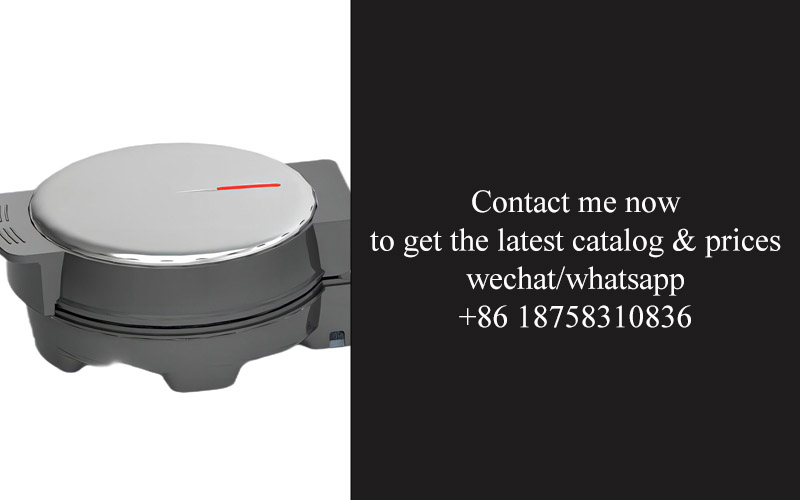
In the ever-evolving world of kitchen appliances, innovation is key to staying ahead of the curve. Here are some groundbreaking ideas that are redefining what’s possible in the realm of kitchen technology.
Smart Integration: Imagine a kitchen where all your appliances communicate seamlessly. A refrigerator that syncs with your smartphone to track your groceries and suggest meal plans. An oven that can adjust its temperature based on the recipe you’re cooking, all controlled through a single, intuitive interface.
Energy Efficiency: With the growing emphasis on sustainability, appliances that consume less energy are becoming increasingly popular. Think of a stove that uses induction technology to heat pots and pans more efficiently than traditional electric or gas burners, reducing energy waste and cooking times.
Customizable Cooking Settings: Many modern appliances now offer customizable settings that cater to individual preferences. For instance, a pressure cooker that allows users to choose the level of pressure for different types of cooking, or a blender that can adjust the speed and texture of its blending cycle to suit the recipe.
Hygiene Automation: The kitchen is a breeding ground for bacteria, but with new innovations, maintaining a clean environment is easier than ever. A dishwasher that uses UV light to sanitize dishes, or a refrigerator with a self-cleaning filter that eliminates odors and bacteria without harsh chemicals.
Interactive Cooking Assistants: Technology is no longer limited to the kitchen appliances themselves. Imagine a countertop device that acts as a digital chef, guiding you through the cooking process with real-time video instructions, ingredient suggestions, and even adjusting the oven settings based on the dish you’re preparing.
Modular Design: Kitchen appliances are becoming more modular, allowing users to mix and match components to suit their space and needs. A modular oven that can be expanded with additional racks or a countertop unit that can transform into a steamer or a grill depending on the user’s requirements.
Health Monitoring: Kitchen appliances are not just for cooking; they’re also becoming health monitors. A coffee maker that analyzes the acidity of your coffee beans to ensure the best flavor, or a blender that can track the nutritional content of your smoothies.
Eco-Friendly Materials: Sustainability isn’t just about energy efficiency; it’s also about the materials used in appliances. Innovators are exploring biodegradable plastics, recycled metals, and sustainable woods for the construction of kitchen appliances, reducing the environmental impact.
Augmented Reality (AR) Cooking: AR technology is making its way into kitchen appliances, allowing users to visualize recipes and cooking instructions in 3D. Imagine placing your smartphone over a countertop and seeing a virtual recipe book that guides you through each step of the cooking process.
Sustainability Features: Beyond materials, appliances are now coming with features that help reduce waste. A fridge with a smart storage system that optimizes space and reduces food waste, or a kitchen disposal unit that can break down organic waste into compostable material.
These innovative ideas are not just about making cooking easier; they’re about creating a kitchen experience that is tailored to the individual, sustainable, and technologically advanced. As the industry continues to push boundaries, we can expect to see even more imaginative and practical solutions that enhance our daily lives in the kitchen.

In the ever-evolving landscape of kitchen appliance design, market trends play a pivotal role in shaping the future of home cooking. From sleek aesthetics to smart technology integration, these trends drive innovation and influence consumer preferences. Let’s delve into some of the key market trends that are currently shaping kitchen appliance design.
Modern Minimalism is on the Rise
Consumers are increasingly drawn to a clean and uncluttered aesthetic in their kitchens. This has led to a surge in demand for appliances that adopt a modern minimalistic design. The focus is on simplicity, clean lines, and a monochromatic color palette, which not only enhances the visual appeal of the kitchen but also allows for a more open and airy space.
Smart Integration is Redefining Convenience
The integration of smart technology into kitchen appliances has become a cornerstone of modern design. Users now expect their appliances to be connected, allowing for remote control, automated tasks, and data analysis. Smart refrigerators, ovens, and dishwashers are just a few examples of how market trends are pushing the boundaries of convenience and efficiency.
Energy Efficiency and Sustainability are Key
As environmental concerns grow, so does the demand for energy-efficient and sustainable kitchen appliances. Designers are incorporating eco-friendly materials and energy-saving features into their products. Appliances with energy-saving modes, LED lighting, and programmable settings to optimize energy use are becoming more popular, reflecting a broader shift towards sustainability.
Health and Wellness are at the Forefront
With a growing emphasis on health and wellness, kitchen appliances are being designed to cater to these needs. There’s a surge in demand for appliances that can help users make healthier choices, such as slow cookers that promote slow-cooked meals, high-tech juicers for fresh juice, and kitchen scales for precise portion control.
Customization and Personalization are Trending
Tailoring appliances to individual preferences has become a significant trend in kitchen appliance design. Users now want appliances that can be customized to fit their specific needs, whether it’s the size, color, or functionality. From modular kitchen systems to customizable oven racks, the market is responding with products that offer a personal touch.
Safety Features are Being Prioritized
As kitchen appliances become more advanced, safety features are becoming increasingly important. Designers are focusing on incorporating child locks, temperature controls, and automatic shut-offs to prevent accidents. The trend towards safety is not only driven by consumer concerns but also by regulatory requirements, ensuring that appliances are secure for all users.
Smart Cooking Systems are Revolutionizing the Kitchen
The rise of smart cooking systems is transforming the way people prepare meals. These systems combine a range of appliances with smart technology to guide users through cooking processes, offering recipes, and even adjusting cooking times and temperatures based on the ingredients used. The trend towards smart cooking systems reflects a desire for ease and expertise in the kitchen.
Sustainability is Not Just a Buzzword
While sustainability has long been a buzzword, it’s now a tangible aspect of kitchen appliance design. From appliances that use less water and energy to those that are recyclable or made from recycled materials, sustainability is becoming a core value in the industry. Consumers are not just buying appliances; they’re making a statement about their commitment to the environment.
Designers are Embracing the Industrial Look
The industrial design aesthetic has been making waves in the kitchen appliance market. With its utilitarian appeal and raw, rustic charm, the industrial look is attracting a new generation of consumers. Appliances with exposed components, metal finishes, and a no-frills approach are becoming popular, offering a unique contrast to the sleek and modern designs that have dominated the market for years.
Innovation in Material Science is Driving Design
Advances in material science are enabling designers to create appliances that are not only functional but also visually stunning. From lightweight yet durable materials to materials that can change color or react to temperature, the possibilities are endless. These innovations are pushing the boundaries of what kitchen appliances can be and how they can enhance the overall kitchen experience.
The Future is Connected and Interactive
The future of kitchen appliance design is all about connectivity and interactivity. Imagine a kitchen where your refrigerator can order groceries, your oven can suggest recipes based on your dietary preferences, and your sink can detect when it needs to be cleaned. These futuristic ideas are becoming more realistic as technology continues to advance, blurring the lines between appliances and smart home systems.
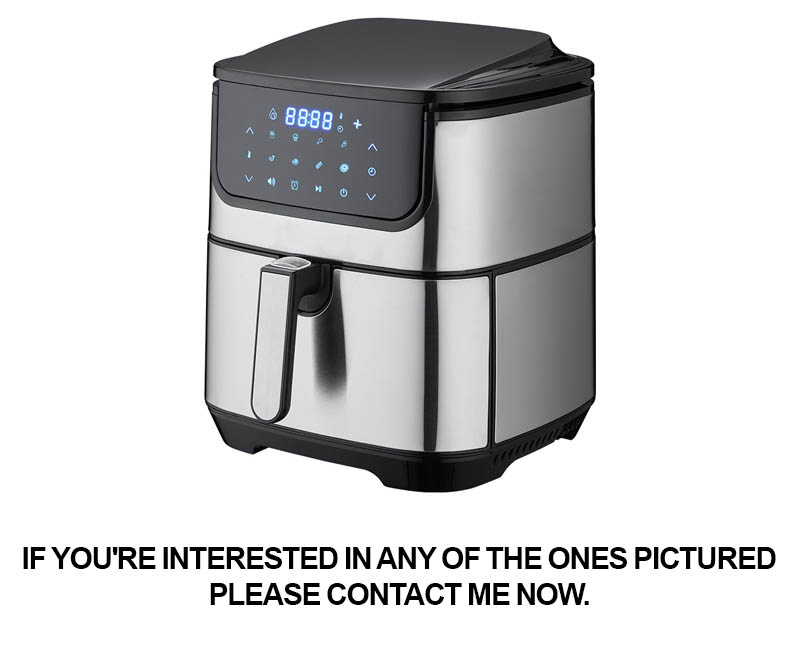
Understanding the evolving landscape of the kitchen appliance market requires a keen eye on the data that shapes it. As consumer behaviors shift and technological advancements surge, the insights derived from data analysis become increasingly pivotal. Here’s a closer look at how these insights and industry analysis are shaping the future of kitchen appliances.
Consumer preferences are the bedrock of innovation in kitchen appliance design. Data reveals that consumers are seeking appliances that are not just functional but also efficient and environmentally friendly. Smart refrigerators, for instance, are becoming popular due to their ability to track food spoilage and suggest meal plans, reflecting a trend towards appliances that can provide lifestyle enhancements.
Analytics have highlighted a growing demand for appliances that integrate seamlessly into the home’s smart ecosystem. The rise of the Internet of Things (IoT) means that kitchen appliances are now expected to communicate with each other and with homeowners’ smartphones. This has led to a surge in the development of voice-controlled kitchen gadgets and smart cookers that can adjust recipes based on the user’s dietary preferences.
Energy efficiency is no longer just a selling point but a fundamental requirement for kitchen appliances. Data-driven analysis has shown that consumers are willing to invest in products that save energy, reducing both their utility bills and their carbon footprint. As such, appliances with energy-saving features are not only more sustainable but also more attractive to environmentally conscious buyers.
The commercial kitchen sector is also influenced by data insights, with operators looking for appliances that offer speed, consistency, and durability. Data analytics have been instrumental in identifying the performance metrics that matter most to chefs and kitchen managers, driving the development of commercial appliances that can handle high volumes and maintain quality.
Product safety remains a critical concern, and data has played a significant role in improving the standards and regulations surrounding kitchen appliances. By analyzing recall reports and safety incidents, manufacturers can identify potential risks and implement necessary changes to prevent future issues.
Another area where data is making a profound impact is in the customization of kitchen appliances. Customization options, from color choices to unique features, are now being informed by customer data, allowing for a more tailored approach to product design. This shift reflects a consumer base that values personalization and the ability to choose appliances that match their individual tastes and needs.
Market trends indicate a growing preference for multifunctional appliances. Data analysis has shown that consumers are more likely to purchase appliances that can perform multiple tasks, such as a single device that can act as a coffee maker, blender, and ice maker. This trend is a response to the need for space-saving and time-efficient solutions in modern kitchens.
The influence of social media and online reviews on appliance purchasing decisions cannot be overstated. Data-driven insights into these platforms provide valuable information on customer satisfaction, popularity, and the factors that drive purchases. Brands are increasingly using this data to refine their marketing strategies and product offerings.
Finally, the global supply chain’s impact on kitchen appliance design is a clear example of how data-driven insights are shaping the industry. With supply chain disruptions becoming more frequent, data analytics help manufacturers anticipate and mitigate risks, ensuring that they can meet demand with products that are both innovative and reliable.
In summary, data-driven insights and industry analysis are integral to the design and development of kitchen appliances. By leveraging these insights, manufacturers can stay ahead of the curve, anticipate market shifts, and create products that resonate with consumers’ evolving needs and desires.
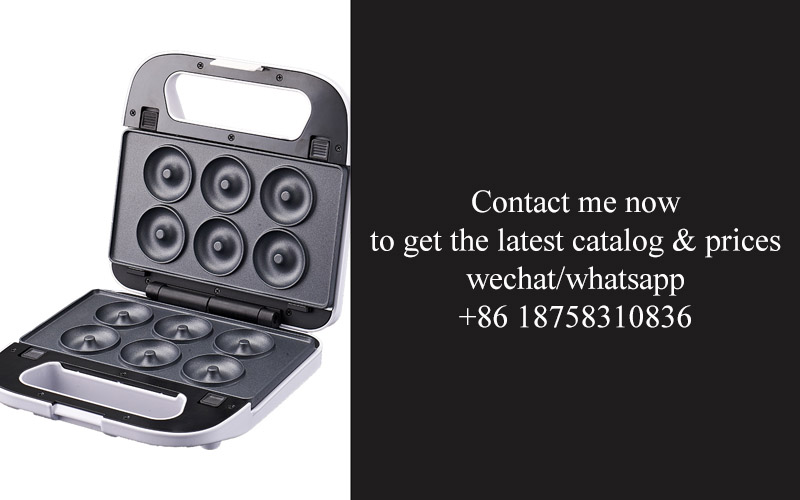
In the realm of commercial kitchen appliances, the ETL (Electrical Testing Laboratories) listing has become a benchmark for quality and safety. Here are some case studies showcasing successful ETL-listed commercial units that have made waves in the market.
A. The Smart Oven RevolutionOne standout success story is the Smart Oven series by KitchenTech Innovations. These ovens, ETL-listed for safety and efficiency, have gained popularity for their ability to adjust cooking times and temperatures based on the type of food being prepared. The intuitive interface and energy-saving features have made them a favorite among professional chefs and home cooks alike.
B. The Eco-Friendly DishwasherAnother successful ETL-listed commercial unit is the EcoDish dishwasher from CleanCycle Appliances. Designed with sustainability in mind, this dishwasher boasts a water-saving system and a self-cleaning cycle that reduces the need for harsh chemicals. Its ETL listing not only guarantees safety but also highlights its commitment to the environment.
C. The Modular Refrigeration SystemThe Modular Refrigeration System by Cool Solutions has become a staple in commercial kitchens worldwide. This innovative unit is ETL-listed for its reliability and versatility. It can be customized to fit various spaces and requirements, from small cafes to large restaurants. The system’s energy-efficient design has helped businesses cut down on operational costs.
D. The Integrated Cooking StationThe Integrated Cooking Station by Chef’s Choice is a prime example of how ETL-listed commercial units can revolutionize kitchen workflows. This compact, ETL-listed unit combines a griddle, a fryer, and a steamer into one, saving valuable counter space and streamlining cooking processes. Its consistent heat distribution and easy-to-clean surfaces have made it a hit in busy kitchens.
E. The Commercial Espresso MachineThe commercial espresso machine by BaristaPro has set a new standard in the coffee industry. ETL-listed for both performance and safety, this machine offers precise temperature control and a range of programmable features. Its sleek design and consistent output have made it a favorite among café owners and baristas looking for a reliable espresso solution.
F. The Energy-Efficient Range HoodsThe energy-efficient range hoods by AirFlow Solutions have become a must-have in commercial kitchens. ETL-listed for their safety and efficiency, these hoods are designed to capture smoke and odors effectively, improving air quality and reducing the need for frequent cleaning. Their innovative filter systems also extend the life of the appliance.
G. The Commercial BlenderThe commercial blender by PowerBlend has been a game-changer in the food preparation industry. ETL-listed for its durability and performance, this blender is capable of handling large volumes of ingredients with ease. Its variable speed settings and powerful motor have made it a favorite among bakers, smoothie bars, and restaurants.
H. The Smart Kitchen Appliance SuiteThe Smart Kitchen Appliance Suite by SmartKitchn is a comprehensive collection of ETL-listed commercial units that work together seamlessly. This suite includes smart refrigerators, ovens, and dishwashers, all connected through a centralized control system. The suite’s ability to optimize energy use and streamline kitchen operations has made it a top choice for modern commercial kitchens.
I. The Commercial Ice MakerThe commercial ice maker by IceMaster has become a staple in bars, hotels, and restaurants. ETL-listed for its quality and safety, this ice maker produces large quantities of ice quickly and efficiently. Its compact design and stainless steel construction ensure durability and ease of maintenance.
J. The Commercial Food WarmerThe commercial food warmer by HeatNook has been a hit in the foodservice industry. ETL-listed for its safety and consistent performance, this warmer keeps food at the perfect temperature, ensuring customer satisfaction. Its user-friendly controls and durable construction have made it a reliable choice for busy kitchens.
These case studies demonstrate how ETL-listed commercial units not only meet stringent safety standards but also push the boundaries of innovation in kitchen appliance design. From energy efficiency to smart technology, these units are shaping the future of commercial kitchens.
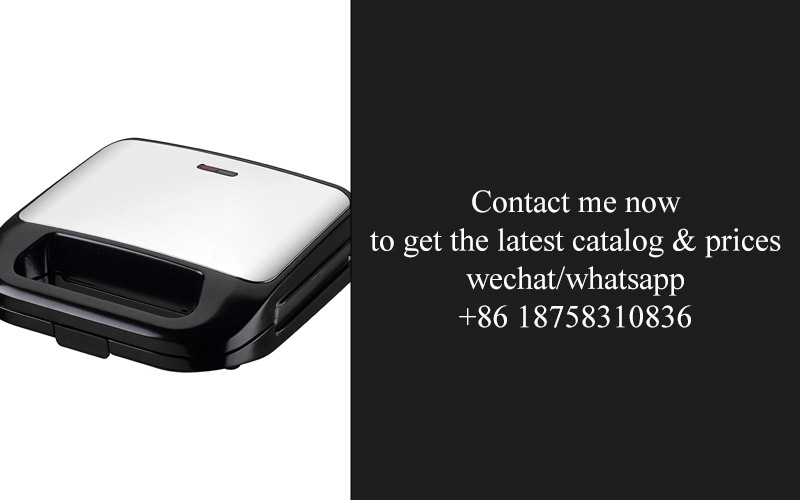
In the realm of kitchen appliances, technological advancements have revolutionized the way we interact with our daily tools. These innovations have not only made cooking more efficient but have also enhanced the overall experience of home life. Let’s delve into some of the notable impacts of these technological breakthroughs.
Smart Connectivity has transformed the kitchen landscape, allowing appliances to communicate with each other and with the user through smartphones and voice assistants. Imagine a scenario where your oven preheats as soon as you step into the kitchen, or your refrigerator syncs with your grocery list app to suggest recipes based on what’s on hand. This interconnectedness has made kitchens smarter, more intuitive, and far less labor-intensive.
Energy Efficiency has become a cornerstone in kitchen appliance design, driven by both environmental concerns and economic sensibilities. Modern appliances are engineered to consume less energy while maintaining or improving performance. From LED lighting in microwaves to induction cooktops that heat food faster and use less power, these advancements have led to significant savings on utility bills and a reduced carbon footprint.
The advent of touchless technology has brought a level of cleanliness and convenience that was once unimaginable. Motion sensors that activate faucets, ovens that open with a wave of the hand, and even dishwashers that can be controlled via an app from across the room—these features have become standard in many new kitchen appliances. The elimination of physical contact reduces the spread of germs and the need for constant cleaning, which is particularly appealing in today’s health-conscious world.
Innovation in materials has also played a significant role in the evolution of kitchen appliances. High-quality stainless steel is now often used for durability and ease of cleaning, while materials like glass and ceramic have been refined for their aesthetic appeal and heat resistance. The use of smart materials that can change color or texture in response to temperature or usage is also gaining traction, offering both a functional and stylish benefit.
Personalization is another area where technology has made its mark. Smart appliances can now be programmed to individual preferences, from the exact temperature of the oven to the specific settings for a particular recipe. Users can create profiles that save their settings and even download new recipes that can be prepared with the touch of a button. This level of customization makes cooking an experience that’s tailored to the user’s specific tastes and needs.
The integration of artificial intelligence (AI) and machine learning has led to appliances that can learn from usage patterns and make adjustments accordingly. For example, a modern refrigerator might learn the frequency with which certain items are used and suggest meal ideas based on those items. This level of predictive analytics not only streamlines the cooking process but also helps to reduce food waste.
Safety features have also seen a major upgrade. Sensors and smart locks on appliances can prevent overcooking or overheating, and in the case of a fire, they can shut off gas lines or activate smoke alarms. These advancements are especially important for families with young children or the elderly, providing peace of mind and reducing the risk of kitchen accidents.
The rise of subscription services for kitchen appliances has created a new business model. Companies offer appliances that are maintained and updated through a monthly or yearly fee, ensuring that users always have the latest technology without the need for large upfront investments. This approach is particularly attractive in a market where consumer expectations for continuous innovation are high.
In conclusion, technological advancements in kitchen appliances have not only made cooking more convenient and efficient but have also brought a new level of sophistication and personalization to the heart of the home. As these technologies continue to evolve, we can expect to see even more innovative solutions that cater to the evolving needs and desires of consumers.
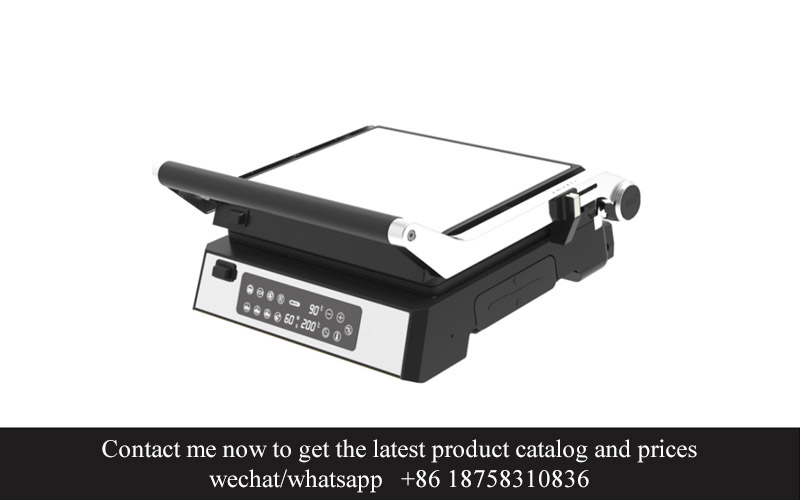
In recent years, consumer preferences in kitchen appliances have shifted dramatically, influenced by a combination of technological advancements, changing lifestyles, and environmental concerns. Here’s a closer look at these evolving trends:
Modern homeowners are increasingly seeking appliances that offer convenience without compromising on style. Smart kitchen gadgets, such as voice-activated assistants and touchless controls, have become popular, reflecting a desire for appliances that can adapt to the user’s lifestyle and preferences.
Energy efficiency is no longer just a buzzword; it’s a core consideration for many consumers. As climate change becomes a more pressing issue, eco-friendly appliances that consume less energy and have a lower carbon footprint are gaining traction. This shift is driven by both environmental consciousness and the potential for long-term cost savings.
Sustainability is also shaping consumer preferences, with a growing number of shoppers looking for appliances made from recycled materials or with a focus on reducing waste throughout their lifecycle. Brands that can demonstrate a commitment to sustainability are likely to see increased consumer loyalty.
The kitchen is no longer just a place for cooking; it’s a hub for entertainment and socialization. Appliances that enhance the overall kitchen experience, such as built-in coffee machines, wine coolers, and smart refrigerators with interactive features, are becoming more appealing.
Health and wellness are at the forefront of consumer minds, and this extends to kitchen appliances. Devices that can help users track their food intake, monitor nutritional content, and even suggest meal plans are becoming more common. For example, smart ovens that can cook a variety of dishes with precise temperature control are becoming a hit among health-conscious consumers.
As the world becomes more connected, consumers are looking for appliances that can integrate with their smart home systems. This means appliances that can be controlled remotely via a smartphone app, offering convenience and the ability to manage kitchen tasks from anywhere.
The desire for customization is also on the rise. Consumers are no longer satisfied with one-size-fits-all appliances. Instead, they’re seeking products that can be tailored to their specific needs, whether it’s through adjustable settings, modular designs, or even personalized recommendations based on usage patterns.
In the realm of cooking appliances, there’s a growing interest in technology that makes cooking more intuitive and enjoyable. For instance, ovens with built-in recipe guides, induction cooktops that offer precise heat control, and multi-functional appliances that can perform multiple tasks are becoming more popular.
The rise of the “foodie” culture has also influenced kitchen appliance trends. Consumers are looking for appliances that can help them experiment with new recipes and cooking techniques. This includes appliances that can handle high temperatures for searing or low temperatures for sous-vide cooking.
As the cost of living continues to rise, consumers are also valuing appliances that offer versatility. Appliances that can do more than one thing, such as a countertop oven that can also serve as a dehydrator or a microwave that can also grill, are seen as a smart investment.
Lastly, the rise of social media and online reviews has given consumers a platform to share their experiences and preferences. This has led to a democratization of kitchen appliance trends, with the most popular features and designs often being driven by what’s trending online.
In conclusion, consumer preferences in kitchen appliances are evolving rapidly, driven by a mix of technological innovation, environmental concerns, and changing lifestyles. As these trends continue to shape the market, appliance manufacturers will need to stay agile and responsive to meet the dynamic needs of their customers.
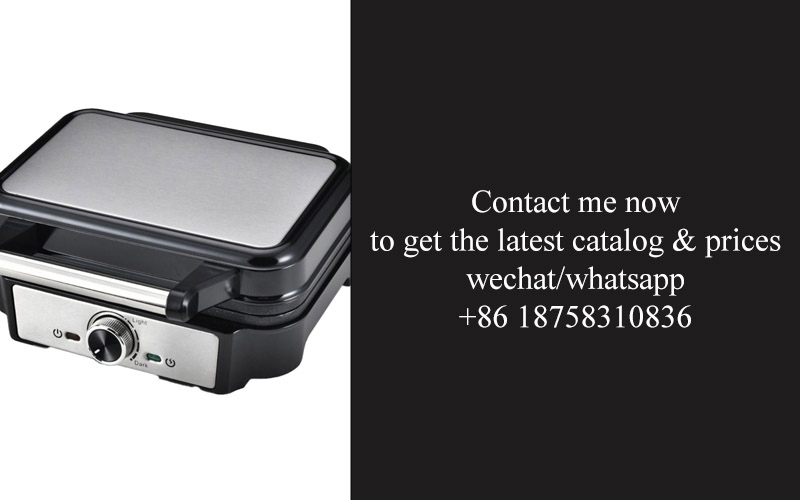
In the competitive landscape of the ETL-listed kitchen appliance market, challenges and opportunities coexist, shaping the trajectory of innovation and consumer adoption. Here’s an exploration of the dynamics at play.
The demand for energy-efficient appliances has surged as environmental consciousness grows. Consumers are not only seeking performance but also sustainability, pushing manufacturers to innovate and meet these expectations.
The integration of smart technology in kitchen appliances has become a cornerstone of modern design. From voice-activated controls to app connectivity, the smart kitchen is no longer a futuristic dream but a present reality, offering convenience and efficiency.
Regulatory compliance remains a significant challenge for manufacturers. The ETL listing process is rigorous, ensuring safety and quality, but it also requires a substantial investment in time and resources.
Emerging markets present a vast opportunity for expansion. As emerging economies grow, so does the demand for kitchen appliances, creating a fertile ground for brands to establish themselves.
The rise of eco-friendly materials is reshaping the market. Consumers are increasingly concerned about the environmental impact of their purchases, leading to a surge in demand for appliances made from recycled or sustainable materials.
Customization is becoming more prevalent, with consumers looking for appliances that cater to their specific needs and preferences. Tailored solutions not only enhance user satisfaction but also open up new revenue streams for manufacturers.
The trend towards health-conscious appliances is gaining traction. From air filtration systems to allergen-reducing features, kitchen appliances are becoming healthier companions, aligning with the broader wellness movement.
Distribution channels are evolving, with e-commerce playing a pivotal role. Direct-to-consumer sales and online marketplaces are reshaping how products are bought and sold, offering both challenges and opportunities for brands.
Product lifecycle management is a complex process that requires careful planning. From design to disposal, the lifecycle of a kitchen appliance impacts its environmental footprint and consumer perception.
Innovation in user interfaces is driving changes in appliance design. Touchscreens, voice recognition, and intuitive controls are becoming standard, reflecting the influence of consumer tech habits.
Market research and consumer insights are crucial for understanding emerging trends. By staying ahead of the curve, manufacturers can anticipate and adapt to changing preferences.
The integration of appliances into smart homes is creating new opportunities. The ability to connect kitchen appliances with other smart devices offers a seamless, integrated experience for homeowners.
The global supply chain is a double-edged sword. While it offers access to a wide range of components and materials, it also poses risks related to supply disruptions and logistics challenges.
The rise of social media has democratized the market, allowing consumers to voice their opinions and influence trends. Brands that engage effectively with their audience can gain significant market advantage.
The need for cross-functional collaboration between designers, engineers, and marketers is more important than ever. Each discipline brings unique insights that can drive successful product development.
Consumer expectations are shifting towards appliances that offer more than just functionality. They are looking for appliances that add value to their lives, whether through health benefits, convenience, or aesthetic appeal.
The sustainability of kitchen appliances is no longer just an environmental issue; it’s a marketing opportunity. Brands that can demonstrate their commitment to sustainability often see a positive response from consumers.
The integration of artificial intelligence into kitchen appliances is on the horizon. AI-driven appliances could offer predictive maintenance, personalized cooking recommendations, and even health monitoring features.
The importance of service and support cannot be overstated. Customers are more likely to choose a brand that offers reliable customer service and after-sales support, especially for expensive appliances.
The ETL-listed kitchen appliance market is dynamic, with a blend of challenges and opportunities. Manufacturers that navigate these complexities effectively will be well-positioned to capitalize on the evolving landscape.
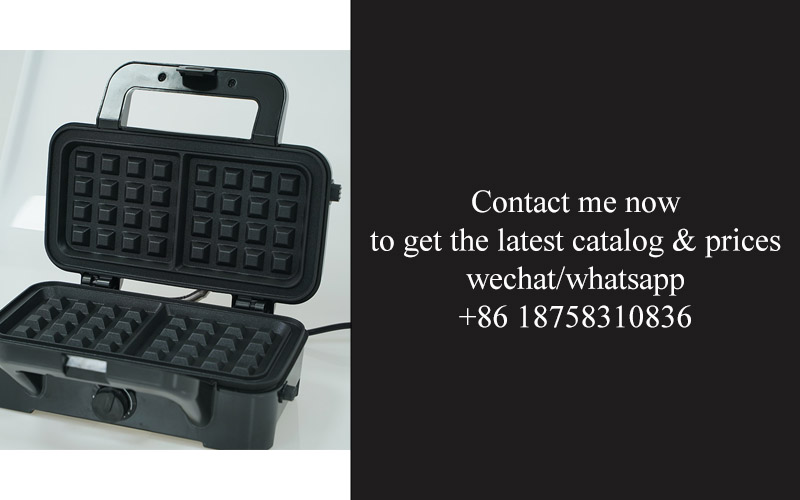
Understanding the complexities of the competitive landscape is crucial for brands aiming to thrive. Navigating through the maze of consumer demands, technological shifts, and market trends requires a nuanced approach. Here’s a delve into some strategies that brands can employ to stand out and succeed:
Brands that wish to succeed must prioritize innovation, ensuring that their products are not just keeping up with the times but are setting new standards. This involves a continuous stream of R&D investments to bring forth groundbreaking features and functionalities that resonate with consumers.
Consumer engagement has evolved from mere transactions to a more personalized experience. Brands need to foster a community around their products, using social media and digital platforms to create a dialogue and build brand loyalty. Tailoring marketing efforts to reflect the values and lifestyles of their target audience is key.
Adapting to the digital revolution is non-negotiable. E-commerce has become a cornerstone of retail, and brands must ensure a seamless online experience. This includes intuitive websites, mobile optimization, and efficient customer service to handle inquiries and transactions smoothly.
In the realm of sustainability, brands that commit to eco-friendly practices and materials are gaining a significant edge. Consumers are increasingly conscious of their environmental footprint, and those who offer solutions that align with green living principles are more likely to be preferred.
Collaborations with other brands can open up new markets and customer bases. Partnerships can lead to co-branded products, shared marketing campaigns, and even joint ventures, allowing brands to tap into each other’s strengths and expertise.
Understanding and leveraging data analytics is essential. Brands can use customer data to tailor their offerings, personalize marketing messages, and optimize their supply chains. The insights gained from data can also inform product development and help anticipate future trends.
Customer service is often the differentiator between a good brand and a great one. Brands that invest in training their customer service teams, offer multiple channels for support, and provide prompt and helpful responses build trust and loyalty.
Brands must be agile and ready to pivot when necessary. Market conditions can change rapidly, and being flexible allows companies to adapt to new challenges and capitalize on emerging opportunities.
Investing in quality assurance and maintaining high standards for product safety and reliability is paramount. A brand’s reputation can be severely damaged by poor-quality products or safety issues, so it’s crucial to have robust quality control measures in place.
Finally, staying informed about regulatory changes and compliance requirements is vital. The kitchen appliance market is subject to various regulations, and staying compliant not only avoids legal issues but also demonstrates a brand’s commitment to safety and ethical practices.